Results 8,021 to 8,030 of 12096
Thread: Anandtech News
-
04-11-18, 07:26 AM #8021
Anandtech: Mainstream Gaming: HP Updates Pavilion Gaming Desktop/Laptop Lineups
On the heels of Intel releasing their 8th Generation Core processors in late 2017, OEMs hustled to get their next generation of desktops and laptops ready to accept that shiny new object. The new CPUs mean additional cores, and in many cases, faster clock speeds promising better performance across a multitude of applications. These updates have, in turn, reached a peak with last week's release of the rest of the 8th gen CPUs, leading to what we have seen over the past several days from Dell, MSI, and others with updated gaming lines, workstations, laptops/2-in-1's and more.
To that end, HP is joining the group refreshing several lineups including Pavilion/Pavilion Gaming desktops and laptops, a Chromebook 2-in-1, as well as a new 32" monitor with HDR. We are seeing hex-cores where quad-cores used to be, and quad-cores where duals were with processors from both Intel and AMD as the weapons of choice. HP slots the Pavilion Gaming lineup as a more affordable path for a gaming machine and wants to bring down some premium features into that lower price point with some of their latest offerings.
Pavilion Gaming Desktops (690/790)
On the desktop side of matters, HP is unveiling their latest updates to the Pavilion Gaming lines with the introduction of the Pavilion 690 and Pavilion 790. The Pavilion Gaming lineup is intended to court the mainstream gamers – those who aren’t really part of the DIY market and are indifferent to having a customizable ecosystem. The key differences between the updated lines lay in the size of the case, and video cards used as well as overall performance. The 690 is the smaller chassis of the two with a 15L internal capacity and starts with an AMD Ryzen APU/AMD video card configuration. The 790 is 33% larger internally at 20L capacity, uses an 8th Gen Intel CPUs and AMD/NVIDIA video card options (supports a faster NVIDIA based GPU on the high end). Both, HP says, offer the latest technology and the ability to upgrade along with a bold design separating itself from the non-gaming Pavilion desktop and laptop lineups.
The updated ‘shadow black’ chassis has an angular design with angular cut bezels and a brushed aluminum finish giving the case a 3D two-tone effect on the front. Also on the front is a green LED strip in the center along with green power buttons, port labels, and a green HP logo on the bottom. It’s clear there is an aesthetic separation between the two lines. The Pavilion 690 chassis measures in at 6.7” x 11.02” x 13.30” (W x D x H) and is able to support up to three storage devices, half-length video cards (up to RX 580), and two DRAM slots (supports up to 32GB). There is a free PCIe x1 slot and M.2 slot inside. The 790 chassis measures in at 6.06” x 14.08” x 14.52” (W x D x H) and will support full-length graphics cards, up to four storage devices, and four DRAM slots (up to 64GB). Inside the 790 are two free PCIe x1 slots as well as a PCIe x4 slot. If multi-GPU is needed, users will have to step up to an Omen or Omen X based desktop.
On the hardware side of things, the 690 uses a quad-core AMD Ryzen 3 2200G processor running at a base clock of 3.5 GHz with a maximum boost up to 3.7 GHz. Maximum CPU support is up to an Intel Core i7-8700. The base configuration comes with 8 GB DDR4-2400 memory in an unfortunate single-channel 1 x 8 GB setup, expandable to 32 GB (2 x 16GB). Storage starts off with a single 1 TB 7200 RPM SATA hard drive with PCIe NVMe and SATA based M.2 drives optional. Storage capacity is up to 3.5 TB when using a 512 GB SSD + 3TB HDD combination. Pushing pixels here is the AMD Radeon RX 550 4 GB as the base model, with upgrade options including NVIDIA's GeForce GTX 1060 3 GB or AMD's Radeon RX 580 8 GB.
The 790, on the other hand, uses a hex-core 8th Generation Intel Core i5-8400, which has a base clock of 2.8 GHz and a maximum turbo frequency of 4 GHz. Its fastest processor is also the i7-8700. The base configuration here is also 1 x 8 GB but the 790 uses the slightly faster DDR4-2666 memory. Memory capacity is expandable to 64 GB (4 x 16 GB), double the 690. The base storage configuration is a 256 GB PCIe NVMe M.2 drive. There are a total of three 3.5” drives and two M.2 slots to mix and match configurations with a swing out HDD tray for easy storage additions. For video cards, the 790 starts off with the NVIDIA GeForce GTX 1050 and goes up to a GTX 1080 8 GB or a RX 580 8GB.
Connectivity and networking configurations are also similar with both the 690 and 790 offering users a wired Gigabit Ethernet port as well as 802.11ac 1x1 Wi-Fi and Bluetooth 4.2 support. Both boxes include a legacy optical drive, two USB 3.1 ports, USB 3.0 Type-C port, as well as an HP 3-in-1 card reader. On the back, both have two USB 2.0 ports and four USB 3.0 ports. The 790 adds two USB 3.0 Type-A ports on the front as well as splitting out the audio combo jack to a headphone and microphone jacks. The video outputs on the 690 consist of a single HDMI port and DisplayPort while the 790 has VGA, HDMI. Other options will vary by the video card chosen. There are no details on the specific audio codecs used, but it is 5.1 surround capable. Both units use HP Audio Stream functionality which will allow you to connect your phone to the PC via Bluetooth and stream audio from your phone to your PC speakers – a pretty cool value-add feature.
The Pavilion Gaming 690 with AMD Ryzen and RX 500 combination starts at $549 while the base 790 with Intel i5-8400 and NVIDIA GTX 1050 will start off at $749. We can expect to see these online and on store shelves in the May/June timeframe.
Pavilion Gaming Laptops (15-cx0020nr / 15-cx0030nr)HP Pavilion Gaming Desktops (690/790) 690 790 Warranty Period 1 Year Warranty Product Page N/A N/A Processors AMD Ryzen 3 2200G 4C/4T - 3.7 GHz Turbo Up to 8th Gen Intel Core i+ four or six core CPUs
i5-8400 6C/6T - 4 GHz TurboMemory Up to 32 GB DDR4-2666 Up to 64 GB DDR4-2666 Network Connectivity Gigabit Ethernet
802.11ac Dual Band (1Tx1R) Wi-Fi
Bluetooth 4.2Storage SSD Up to 512 GB M.2 SATA
Up to 512 GB PCIe NVMeHDD Up to 3 TB 7200 RPM SATA Graphics Up to:
NVIDIA GeForce GTX 1060
or AMD Radeon RX 580Up to:NVIDIA GeForce GTX 1080or AMD Radeon RX 580Expansion Slots 1 x SD card reader (3-in-1)
1 x PCIe x1 (available)
1 x PCIe x16 (occupied)
2 M.2 (one available)1 x SD card reader (3-in-1)2 x PCIe x1 (two available)
1 x PCIe x4 (available)1 x PCIe x16 (occupied)2 M.2 (occupied)Display N/A Ports and Connectors 1 x Headphone/mic ComboFront: 2 x USB 3.1, 1 x USB 3.0 Type-C
Rear: 2 x USB 2.0, 4 x USB 3.0
1 x HDMI
1 x DisplayPort1 x Headphone/mic ComboFront: 2 x USB 3.0, 2 x USB 3.1, 1 x USB 3.1 Type-C,
Rear: 2 x USB 2.0, 4 x USB 3.0
1 x VGA
1 x HDMI
1 x Microphone
3 x DisplayPort (depends on GPU)Input Device HP Wired keyboard and wired optical mouse Camera N/A Power 310W Internal 400W Internal Audio 5.1 Surround Dimensions
(L x W x H)11.02" x 6.69" x 13.30" 14.79" x 6.06" x 14.37"Weight ~11.35 lbs ~18.96 lbs Price ($US) Starting $549 Starting $749
On the mobile side of Pavilion Gaming, HP brought out two options, the first - the 15-cx0020nr - is intended for those who may be more price-sensitive. This laptop includes a “U” series Intel CPU and is paired with NVIDIA's GeForce GTX 1050 as its only graphics option. The higher-end 15-cx0030nr will an 8th Generation Intel CPU along with video card choices going up to a GTX 1060 Max-Q or AMD's new Radeon RX 560X. The options in the Pavilion lineup do a good job not stepping on the toes of their Omen and Omen X lineups by limiting the higher end options. The Omen lineups are intended to scale better, have more aggressive design aesthetics and a full complement of hardware options to choose from as well as a more thorough and customizable ecosystem. The Pavilion Gaming laptops intend to fill that gap with a more palatable pricing format as well as hardware to perform its intended function.
The design of the Pavilion Gaming laptops, as with the desktops, set themselves apart from the non-gaming Pavilion laptops. With the top closed, the black chassis is fairly non-descript outside of the larger exhaust vents on the rear. The monitor has a narrow border design (a signature element) along with an aluminum keyboard deck. The 30nr will come in three colors, Ghost White, Acid Green, or Ultraviolet (exclusive to HP) with the backlit keyboard color to match. The side bezels are 9.8mm on the side and 16.14mm on top which can shrink the overall size of the laptop. The angular design has a focus on venting and thermal performance to help keep the hardware cool inside with its dual cooling fans moved to the edge to allow for better airflow across the components. The now-familiar signature geometric faceted speaker grille finds its way to the Pavilion Gaming laptops as well as being found on all other pavilion laptops.
Along with the aforementioned quad and hex-core options for the various Pavillion 15 models, the 0030 model also includes Intel 8th Generation i+ options which include Intel Optane memory. Video card solutions range from a NVIDIA GeForce GTX 1050 or AMD RX 560X, up to a NVIDIA GTX 1060 Max-Q. RAM appears to max out at 8GB of DDR4-2666 in 1x8 GB configuration. The Memory slot is not user accessible so at first glance it appears 16 GB is out of the question on the Pavilion Gaming Laptops this generation. Storage options range from a 1 TB 5400 RPM hard drive and 128 GB PCIe NVMe M.2 SSD for a total of 2.1 TB with a 128 GB SSD and 2 TB HDD. There are three monitor choices, a FHD (1920x1080) 60 Hz display, FHD 144 Hz display, or 4K UHD options.
For networking and connectivity, there is a Gigabit LAN port along with 802.11ac 2x2 Wi-Fi and Bluetooth 4.2. In addition, HP offers optional Wi-Fi supporting up to Gigabit speeds. External ports include a single USB 3.0 Type-C port, two USB 3.0 ports, HDMI for video, RJ-45, multi-format digital media card reader as well as a headphone/microphone combo jack. Last, audio functionality is handled by dual stereo speakers with Bang & Olufsen Play support.
The “U” series based SKU is only available in select markets – no price listed. Base price for a i5-8350H/ Radeon RX 560X/1080p 60 Hz display/1 TB HDD + 16GB Optane starts at $799. The Pavilion Gaming laptops will also be available in the late May or June timeframe both online and in-store.
Related Reading:HP Pavilion Gaming Laptops (0020/0030) 0020 0030 Warranty Period 1 Year Warranty Product Page N/A N/A Processors i5-8250U 4C/8T - 3.4 GHz Turbo Up to 8th Gen Intel Core i+ four or six core CPUs
i5-8300H 4C/8T - 4 GHz Turbo
i7-8750H 6C/12T - 4.1 GHz TurboMemory Up to 8 GB DDR4-2666 Up to 8 GB DDR4-2666
16 GB Intel Optane MemoryNetwork Connectivity Gigabit Ethernet
802.11ac Dual Band (2Tx2R) Wi-Fi + Bluetooth 4.2
802.11ac Dual Band (2Tx2R) Gigabit Wi-Fi + Bluetooth 5.0 (optional)Storage SSD Up to 256 GB PCIe NVMe HDD Up to 2 TB 5400 RPM SATA
or
Up to 1 TB 7200 RPMGraphics Up to:
NVIDIA GeForce GTX 1050TiUp to:NVIDIA GeForce GTX 1060Max-QExpansion Slots 1 x SD card reader (3-in-1)
1 x PCIe x1 (available)
1 x PCIe x16 (occupied)
2 M.2 (one available)1 x SD card reader (3-in-1)2 x PCIe x1 (two available)
1 x PCIe x4 (available)1 x PCIe x16 (occupied)2 M.2 (occupied)Display N/A Ports and Connectors 1 x USB 3.0 Type-C
2 x USB 3.0
1 x HDMI
1 x RJ-45
1 x Headphone/microphone combo1 x USB 3.0 Type-C2 x USB 3.01 x HDMI1 x RJ-451 x Headphone/microphone comboInput Device Full-size island style backlit keyboard w/numeric keypad Camera Front-facing HP Wide Vision HD Webcam w/ dual array microphones Power 52.5Whr 3-cell polymer/prismatic mix battery
150W AC Adapter52.5Whr 3-cell polymer/prismatic mix battery150W AC AdapterAudio Bang & Olufsen Play with dual speakers Dimensions
(W x D x H)14.40" x 10.01" x 1.00" 14.40" x 10.01" x 1.00"Weight ~5.18 lbs Price ($US) Starting $??? in select markets $799 - Acer Nitro 5 Gaming Laptop: 15.6-inch, Up to Core i7, GTX 1050 TI, From $749
- Origin PC Evo15-S Gaming Laptop: Core i7, GTX 1070 Max-Q, 1080p144
- Xiaomi Announces 15.6-inch Mi Gaming Laptop: Mid-Specs with Aggressive Pricing
- Dell at CES 2018: Inspiron Gaming Desktop Receives Intel 8th Gen Processors, AW Command Center Update, eSports Training Center
More...
-
04-11-18, 12:15 PM #8022
Anandtech: HP Announces Pavilion Gaming 32 HDR Display: 32" WQHD w/DisplayHDR 600 & F
Alongside their new Pavilion gaming desktops and laptops, today HP is also announcing an addition to their monitor stable with the release of the new Pavilion Gaming 32 HDR Display. An update of sort to HP's current family of 32-inch monitors, including the existing Pavilion Gaming 32 and Omen 32, HP's latest monitor carves out an important niche for itself by adding basic HDR support.
At a high level, the Pavilion Gaming 32 HDR is built on a 32-inch VA panel featuring a 2560x1440 resolution, 300 nits typical brightness, 3000:1 contrast ratio, 5ms response times, and like many of HP's other 32-inch monitors, is FreeSync (1) enabled. The all-important backlighting system being used to enable HDR is an edge-lit LED system that, like similar systems, supports eight different zones of local dimming for increased contrast.
The chassis of the monitor comes in one color, Shadow Black. About the most identifiable feature is the stand that supports the panel. Instead of a circular base with a single post, HP is using a rectangle shaped base with two posts which should make for more stable footing. The back of the monitor has a large green HP symbol in the middle of its gentle arched rear panel. Still on the rear but at the bottom, we are able to see the power adapter, two USB 3.0 ports, as well as the two HDMI and single DisplayPort ports. On the far left is where the power, menu, and adjustment buttons which leave the front with a clean aesthetic. The only design features on the front is a smaller HP symbol in green in the center of the bottom bezel, as well as the power LED in the bottom right corner.
Officially this is an DisplayHDR 600-certified monitor. This means that it supports limited/mid-tier HDR features, including 600 nits peak luminescence for brief periods of time. HP rates the typical brightness at just 300 nits, though as a DisplayHDR 600-compliant display it should be able to sustain 350 nits indefinitely. Equally important, on the color gamut side, the DisplayHDR requirements mean that this monitor needs to support DCI-P3, with HP going above and beyond the standard with a 95% DCI-P3 color gamut.
Meanwhile to earn its gaming credentials, the monitor supports AMD's first-generation FreeSync variable refresh technology. The 48Hz to 75Hz refresh rate isn't quite wide enough to support FreeSync low framerate compensation, but along with allowing at least some variability here, the higher-than-average 75Hz refresh rate does give the monitor an edge in smoothness over standard 60Hz monitors. Thsi also puts the Pavilion Gaming 32 HDR in limited company as it offers both HDR and FreeSync support. Notably however this is not a FreeSync 2 display, so it doesn't get to take advantage of AMD's latest technology there.
The HP Pavilion Gaming 32” Display will cost $449 and will be available through HP.com and other retailers on May 11th.
Related Reading:Specifications of the HP Pavilion Gaming 32 HDR 3BZ12AA#ABA Panel 32" VA Native Resolution 2560x1440 (WQHD) Refresh Range 48 -75 Hz Response Time 5 ms GtG Brightness 300 cd/m² (typical)
600 cd/m² (peak)Contrast 3000:1 Viewing Angles 178°/178° horizontal/vertical Pixel Pitch 0.276 mm² Pixel Density 91.8 ppi Display Colors 16.7 million Color Gamut Support DCI-P3 95% Inputs 1 × DisplayPort
2 × HDMI
HDCP 1.4/2.2Stand Tilt angle: 21° up; 5° down Audio N/A VESA 100 × 100 Additional Information N/A - Dell's Spring Range: New 8th Gen Alienware, Laptops, and Monitors
- LG Introduces New UltraFine 4K and 5K Monitors
- HP Z27q Monitor Review: Aiming For More Pixels
- LG Announces the 5K UltraWide 34WK95U: A 'Nano IPS' Monitor with a HDR600 Badge
- LG Develops ‘Nano IPS’ LCD, Unveils 32UK950 4K Display with DCI-P3, HDR600, TB3
- Dell Previews 27-inch ‘5K’ UltraSharp Monitor: 5120x2880
More...
-
04-11-18, 12:15 PM #8023
Anandtech: Cadence Announces Tensilica Vision Q6 DSP
Today’s announcement comes from Cadence, and we see the unveiling of a new DSP IP called the new Tensilica Vision Q6. The Q6 succeeds the Vision P6 which as of late has had quite a success: the P6 is included in HiSilicon Kirin 970 SoC which powers the Mate 10 and P20 devices, and serves as the main imaging processing unit enabling a wide variety of features.
As the industry and underlying technology is evolving, we’ve seen a large shift in image processing on mobile devices, which over the last couple of years have been increasingly relying on processing to improve camera capabilities. DSPs are becoming ever more important in smartphone devices and mainstream players such as Qualcomm have touted the advantages for a long time. We’ve seen vendors such as Google even go as far as including dedicated SoCs such as the Pixel Visual Core, with the goal of augmenting the imaging processing capabilities of their devices.
More...
-
04-12-18, 08:37 AM #8024
Anandtech: The Dell Latitude 13 7390 2-in-1 Review
Dell’s XPS lineup of consumer laptops are some of the best in the business, and Dell started the thin-bezel trend that has now taken over the industry. But if you’re in the market for a business laptop and the practicality that implies, their Latitude lineup is likely more suited for your needs. To that end, today we’re taking a look at the latest Dell Latitude 13 2-in-1 model, the 7390. This latest business model from Dell features all of the latest features, including 8th generation quad-core CPUs, and the business features you’d expect like vPro, and optional Smart Card support. It even offers cellular connectivity for those that need to work on the go.
More...
-
04-12-18, 08:37 AM #8025
Anandtech: Intel Core-B Processors: 8th Gen BGA with 65W TDP
During the mêlée of last week and Intel announcing the next wave of 8th Gen Core processors, there were a few products that Intel did not include in the official announcement. The ones that we caught were the Pentium Gold and Celeron desktop product line, but over the weekend we have also noticed that Intel is introducing a new line of ‘B’ processors.
The key features of the B processors are that they are named and perform similarly to the desktop processors the names are based on, but are not designed for socketed desktops: they use BGA mounting, similar to notebook processors. The high-end notebook processors, Core-H, are historically denoted by their 45W TDP, while these new Core-B processors have a 65W TDP. Intel has stated that this is not a ‘new B-series’ of processors, however they do not fall into the standard Core-S desktop definition, nor do they really qualify as notebook processors, siting above the Core-H line in a high-power segment that Intel defines for All-in-One types of systems (monitor with the PC embedded in the back).
The goal of the Core-B line, as we were told, is to offer embedded versions of desktop processors for AIO-type form factors with a lower z-height, enabling a more streamlined and premium design for integrated desktops. In the past this segment was supplied by Core-H or socketed Core-S processors. It is a little strange though – Intel’s own processor model tracking system, ARK, has a field for ‘embedded options available’ with the desktop processors, suggesting that they could have just said ‘yes’ and kept the name the same. But on a positive side, we can now identify which AIOs are using socketed parts compared to those using embedded parts, identified by the Core-B CPUs.
The initial run of the Core-B line will have a Core i7-8700B, Core i5-8500B, and Core i5-8400B.
In all respects, these are identical to their 65W desktop equivalents. That includes core counts, base frequencies, turbo frequencies, memory support, Optane support, and integrated graphics. The only difference however is that these CPUs are likely to be placed into TDP-limited scenarios enabled through firmware.AnandTech Core
i7-8700BCore
i5-8500BCore
i5-8400TDP 65 W 65 W 65W Cores 6C / 12T 6C / 6T 6C / 6T Base Frequency 3.20 GHz 3.00 GHz 2.80 GHz Turbo Frequency 4.60 GHz 4.10 GHz 4.00 GHz iGPU UHD 630 UHD 630 UHD 630 iGPU Base/Turbo 350 / 1200 MHz 350 / 1100 MHz 350 / 1050 MHz DRAM Support DDR4-2666 DDR4-2666 DDR4-2666 Optane Support Yes Yes Yes
For example, take the MSI Vortex G25 system. I saw this at the end of last year at an Intel event in London, and noticed it had the Core i7-8700 processor in it. Based on our initial 8th Generation review and internal testing, I knew that the Core i7-8700 in a thermally unrestricted desktop drew a lot of power depending on how the BIOS was configured – somewhere north of 120W when the system was loaded and Intel’s all-core turbo was in play. So in spending 10 minutes with the Vortex system, I was able to determine that the Core i7-8700 in it was limited at the BIOS level to 65W maximum. As a result, for anything approaching serious multi-core workloads, the system was running at 3.2 GHz.
This ultimately made sense – the system design, with a big GPU inside, is limited by the ability to remove heat. The system was also designed by MSI’s laptop team, so they do know a thing or two about adjusting TDP limits using the BIOS. However, we were now in a situation where the Core i7-8700 in the MSI Vortex would perform significantly worse (up to 33%) on certain workloads due to the TDP limitation compared to a thermally unrestricted Core i7-8700 in a desktop allowed to implement the standard turbo profile.
The net result here is that systems like the Vortex will transition to these new Core-B processors. The upside is that the system design could be more efficient, and that when we see a B-series processor, we could ascertain that the turbo performance (especially multi-core turbo) might be lower than the desktop equivalent. The downside is the user will not be getting unrestricted i7-8700 performance.
Buy Intel Core i7-8700K on Amazon.com
A Small Chipset Announcement
Also on Intel’s cards, but not in the official announcements, was the CM246 mobile chipset, used by the new 8th Gen Core laptops that have Xeon-E processors in them. This chipset is a beefed up version of the HM370 chipset, supporting 24 PCIe lanes, six USB 3.1 (10 Gbps) ports, eight SATA ports, vPro, and Intel’s RST Enterprise. Intel rates the chipset at a 3W TDP. We are still waiting for the full announcement of the Xeon-E line, however.
Related Reading- The AnandTech Coffee Lake Review: Initial Numbers on the Core i7-8700K and Core i5-8400
- Intel Expands 8th Gen Core: Core i9 on Mobile, Iris Plus, Desktop, Chipsets, and vPro
- Dell's Spring Range: New 8th Gen Alienware, Laptops, and Monitors
- Samsung Odyssey Z Gaming Notebook: Going For Gamers with 8th Gen and Max-Q
- MSI's GT75 Titan DTR Laptop Gets Coffee Lake Treatment: Core i9 + GeForce GTX 1080
- ASUS ROG Spring System Updates: Gaming Big and Small
- HP Spring 2018 Range: ZBook, ZBook, ZBook
More...
-
04-12-18, 11:50 AM #8026
Anandtech: G-Technology Unveils G-Speed, G-Drive Pro External SSDs: High Speed DAS Fo
G-Technology this week introduced its new families of external SSDs featuring a Thunderbolt 3 interface, up to 16 TB capacity, and 2800 MB/s sustained throughput. The new DAS from G-Technology are aimed at mobile workstations used for 4K, 8K, and VR content creation.
The new lineup of G-Technology’s external SSDs includes the G-Speed Shuttle multi-bay solid-state storage system, which is for use in studios as well as on set, the G-Drive Pro SSDs, and the G-Drive mobile Pro drives for use primarily on the go. G-Technology guarantees that all the drives offer 2800 MB/s of sustained read speeds in a bid to enable editing of multi-stream Ultra HD footage at full frame rate, or quickly render VR projects.
G-Technology (and Western Digital, the owner of the brand) does not disclose what type of NAND flash memory and NAND controllers the new SSDs use. Meanwhile, since we are dealing with workstation-class products, it is logical to assume that the manufacturer uses highly-reliable components. Just like many other advanced SSDs, the new external drives from G-Technology are covered by a five-year warranty.
The G-Speed Shuttle SSD is the flagship external solid-state storage system from G-Technology featuring a hardware RAID controller (RAID 0, 1, 5, 10, and 50 modes are supported), and eight bays for SSD modules. The storage device will be available in 8 TB and 16 TB versions (it is unclear whether the numbers are raw NAND, or usable NAND), it will have two Thunderbolt 3 ports to daisy chain up to five additional devices (e.g., build an external solid-state storage system featuring a 96 TB capacity). The G-Speed Shuttle comes in enclosure with a handle to enable a more comfortable transportation from a studio to a shooting site.
The G-Speed Shuttle SSD featuring 8 TB capacity will start at $5,100, the 16 TB version will cost $7,600. The storage systems will be available this month.
Moving on to the G-Drive Pro SSDs. These external storage devices pack enterprise-class PCIe SSDs rated for 1 DWPD and will be available in 960 GB, 1.92 TB, 3.84 TB and 7.68 TB capacities. G-Drive Pro will come in stackable aluminum enclosures with two Thunderbolt 3 ports for daisy chaining of up to five additional devices. In addition, the drives are equipped with an active cooling to guarantee sustainable performance.
Pricing of the G-Drive Pro SSDs will start at $1400 for a 960 GB version, whereas the top-of-the-range 7.68 TB SKU will be priced at $7,600. G-Technology plans to start sales of the G-Drive Pro SSDs in May.
For those who need an ultra-fast, durable SSD in a shock-resistant enclosure, G-Technology will offer the G-Drive mobile Pro SSDs. These drives will be available in 500 GB and 1 TB capacities and will come in chassis speced for a three-meter drop protection and a 1000-lb crush-proof rating. The G-Drive mobile Pro SSDs are not exactly the most portable mobile storage devices, they do not support daisy chaining, but if you need extra protection for your data, this seems like a fair trade off.
As for pricing, a 500 GB G-Drive mobile Pro SSD will cost you $650, whereas a 1 TB version will be available for $1,050. The manufacturer plans to ship the new drives this Summer.
Related Reading:G-Technology's 2018 DAS SSDs with Thunderbolt 3 G-Drive Shuttle G-Drive Pro SSD G-Drive mobile Pro Number of Bays 8 swappable bays for SSDs - Capacity 8 TB
16 TB960 GB
1.92 TB
3.84 TB
7.68 TB500 GB
1 TBRAID 0/1/5/10/50 - Sustained Read Speed 2800 MB/s Sustained Write Speed unknown RAID Controller Hardware RAID controller - Ports 2 × Thunderbolt 3 1 × Thunderbolt 3 PSU integrated external bus-powered Dimensions Width 24.7 cm | 9.75 inch 13 cm | 5.12 inch 8 cm | 3.15 inch Length 17.4 cm | 6.85 inch 21 cm | 8.27 inch 11.2 cm | 4.41 inch Height 26.7 cm | 10.5 inch 4.5 cm | 1.79 inch 1.7 cm | 0.67 inch Cables Included Thunderbolt 40Gb/s cable
power cordThunderbolt 40Gb/s cable
power adapter + cordThunderbolt 40Gb/s cable Compatibility macOS 10.12+
Windows 10, 7 (via reformat)macOS 10.13+
Windows 10 (via reformat)MacOS 10.13+
Windows 10 (via reformat)Price (MSRP) 8 TB: $5,100
16 TB: $7,600960 GB: $1,400
1.92 TB: $2,100
3.84 TB: $4,100
7.68 TB: $7,600500 GB: $660
1 TB: $1,050
- TEKQ Rapide Thunderbolt 3 External SSD Review
- Patriot Announces EVLVR Thunderbolt 3 SSD: Phison PS5008-E8, Up to 1.5 GB/s, 1 TB
- LaCie Announces 2big Dock: 2-Bay TB3 DAS with Card Reader, USB-A and DisplayPort
- HighPoint RocketStor 6618 Thunderbolt 3 DAS: 8-Bays, Up to 96 TB, 2.7 GB/s, $999
- LaCie Launches Rugged and d2 Thunderbolt 3 Storage Devices
- Promise Launches Pegasus3 External Storage via TB3: Up to 48 TB, 1.6 GBps
- LaCie Announces Bolt3: 2 TB External SSD at 2.8 GBps over Thunderbolt 3
- LaCie Launches 6big and 12big: Up to 60/120 TB External Storage with Thunderbolt 3
More...
-
04-12-18, 05:09 PM #8027
Anandtech: Intel’s Core i5+, Core i7+ CPUs with Bundled Optane SSDs Hit Retail
Earlier this month Intel introduced its Core i+ processor brand for desktops and laptops. The brand-within-a-brand setup sees Intel's 8th gen Core i5, i7, and i9 CPUs bundled with its Optane caching SSDs and sold as the i5+, i7+, and i9+ respectively. The chip giant aims such CPUs at customers who would like to improve performance of their storage subsystems yet won't be investing in full-fledged SSDs. And, after showing up in OEM systems with last week's launch, the Core i+ processors are now also to retail buyers.
Overall, Intel is rolling out the Core i+ in retail, targeting DIY end-users in the U.S., Canada, and Japan. The lineup of Intel’s Core+ CPUs for desktops currently consists of three SKUs: the Core i7+8700, the Core i5+8500 and the Core i5+8400. The bundles include 16 GB Optane caching drives and are priced at $340, $240 and $215, respectively. For mobile computers, Intel is also offering Core i9+ processor bundles, but it remains to be seen whether the company also plans to expand the family of its Optane-bundled offerings for desktops.
With its Optane caching SSDs (which it calls Optane memory modules), Intel is attempting to kill two birds with one stone. Firstly, the company is capitalizing on demand for high-performance/high-capacity storage subsystems that combine responsiveness of SSDs and capacities of HDDs. Secondly, the company is ramping up production of its 3D XPoint memory and gaining experience in its high-volume manufacturing (i.e., improving yields), something that it is going to need to address needs of datacenter and enterprise market segments going forward.Intel Core i5+ and Core i7+ CPUs with Bundled Optane SSDs for Desktops Price with 16 GB Optane Price of CPU only PN Core i7+8700 $340 $302 BO80684I78700 Core i5+8500 $240 $205 BO80684I58500 Core i5+8400 $215 $179 BO80684I58400
This increased focus on selling lower capacity Optane modules for caching comes as Intel has made some notable changes to their caching subsystem to improve its usefulness. The Optane software can now cache data from any HDD (not just the primary/boot one), opening up interesting usage scenarios with secondary HDDs for end-users who have already invested in a SSD for their boot drive.
Intel says that a hybrid storage subsystem accelerated by a 32 GB Optane caching SSD is 1.7 – 3.9 times faster when compared to a non-accelerated HDD-based subsystem (see the slides below for details). The performance boost only occurs in situations when cached data is used, so a caching SSD is not a replacement for a regular SSD. However, it is considerably cheaper and since it does improve user experience, it makes the Core i+ bundles particularly useful for PC makers.
Last year Intel teamed up with select makers of motherboards to bundle its Optane caching SSDs with their platforms. This year the company is shifting its strategy and intends to sell such drives with its CPUs.
Buy Intel Core i7+8700 on Newegg
Related Reading:
- The Intel Optane Memory (SSD) Preview: 32GB of Kaby Lake Caching
- The Intel Optane SSD 800p (58GB & 118GB) Review: Almost The Right Size
- The Intel Optane SSD 900p 480GB Review: Diving Deeper Into 3D XPoint
Sources: TechReport, Tom’s Hardware
More...
-
04-13-18, 08:34 AM #8028
Anandtech: AMD Ryzen 2nd Gen Details: Four CPUs, Pre-Order Today, Reviews on the 19th
Today marks the initial start of AMD’s pre-sale of 2nd Generation Ryzen processors. The full launch is set for April 19th, which is when reviews and performance numbers will be officially available, but today we are able to tell you a bit about the processors that are coming, as well as some pictures, and link readers to where they can pre-order. We’re not overly fond of manufacturers offering pre-orders before revealing performance numbers, as with the Threadripper launch last year, however we can at least discuss the details of each part.
More...
-
04-13-18, 08:34 AM #8029
Anandtech: The MSI X370 XPower Gaming Titanium Motherboard Review: A Silver Flagship
The MSI X370 XPower Gaming Titanium is marketed as a top of the range ATX offering and currently stands as MSI's flagship AM4 socket motherboard. The XPower branding over the years has been heavily associated with overclocking and enthusiast level performance, but due to a change in the direction MSI in terms of marketing, the XPowerbranding now correlates with gaming as well. As MSI's top dog, the silver design has hopes and dreams of standing out in a densely populated segment.
More...
-
04-13-18, 10:06 AM #8030
Anandtech: OWC Ships ThunderBlade External SSDs, Touts SoftRAID Tech for 3800 MB/s Sp
OWC this week began to ship its ThunderBlade external SSDs with a Thunderbolt 3 interface. The new DAS can deliver up to 2800 MB/s read speeds, which is beyond what even USB 3.1 Gen 2 can offer and is designed to play into the bandwidth advantages of TB3. Meanwhile, two ThunderBlades can be run in OWC’s proprietary SoftRAID mode to take a full advantage of the TB3 bus at up to 3800 MB/s.
OWC’s ThunderBlade DAS devices are available in 1 TB, 2 TB, 4 TB and 8 TB configurations. Based on the images that OWC demonstrates, all the models are based on four Mercury M.2 SSDs (Silicon Motion SM2260, LDPC, 3D MLC NAND) working in concert (think software-based RAID, but this is not something that OWC confirms). The manufacturer specs its ThunderBlade storage devices for up to 2800 MB/s sequential read speed as well as up to 2450 MB/s sequential write speed, which must be sustained speeds.
Customers who need additional capacity can daisy chain up to six ThunderBlade DAS devices to get up to 48 TB of solid-state storage, whereas clients who need extra performance can run two ThunderBlades in the SoftRAID mode (once deployed for particular drives, they can be used on all types of PCs no matter which OS they use) to get up to 3800 MB/s transfer speeds. Keep in mind though that to get maximum throughput, one needs to connect the drives to ports featuring full TB3 bandwidth (i.e., don't connect them to the right-hand TB3 ports of 13-inch MBPs as they have reduced PCIe bandwidth, which is what OWC does on the picture below).
Since relatively portable DAS are usually transported with high-performance laptops to shooting locations, the OWC ThunderBlade drives come in a rugged enclosure made of metal that also acts like a cooling system for the NVMe SSDs.
The new DAS are designed for customers working on Ultra HD video and/or VR content and who need external storage devices with extreme speeds as well as enhanced reliability. Therefore, prices of the drives are fairly high. OWC’s ThunderBlade are available from the manufacturer at MSRPs from $1,199 to $4,999.The OWC ThunderBlade DAS 1 TB 2 TB 4 TB 8 TB Number of Drives 4 Internal RAID ? Sustained Read Speed 2800 MB/s
3800 MB/s with SoftRAID (two DAS are needed)Sustained Write Speed 2450 MB/s Ports 2 × Thunderbolt 3 PSU external Dimensions Width 12.3 cm | 4.9 inch Length 19.2 cm | 7.5 inch Height 3 cm | 1.2 inch Weight 0.7 kg | 1.8 lb Cables Included Thunderbolt 40Gb/s cable
power adapter + cordCompatibility macOS 10.13 or later
Windows 10 or laterPrice (MSRP) $1,199.99 $1,749.99 $2,799.99 $4,999.99
Related Reading:
- G-Technology Unveils G-Speed, G-Drive Pro External SSDs: High Speed DAS For Workstations
- TEKQ Rapide Thunderbolt 3 External SSD Review
- Patriot Announces EVLVR Thunderbolt 3 SSD: Phison PS5008-E8, Up to 1.5 GB/s, 1 TB
- LaCie Announces Bolt3: 2 TB External SSD at 2.8 GBps over Thunderbolt 3
- LaCie Announces 2big Dock: 2-Bay TB3 DAS with Card Reader, USB-A and DisplayPort
- HighPoint RocketStor 6618 Thunderbolt 3 DAS: 8-Bays, Up to 96 TB, 2.7 GB/s, $999
- LaCie Launches Rugged and d2 Thunderbolt 3 Storage Devices
- Promise Launches Pegasus3 External Storage via TB3: Up to 48 TB, 1.6 GBps
More...
Thread Information
Users Browsing this Thread
There are currently 9 users browsing this thread. (0 members and 9 guests)




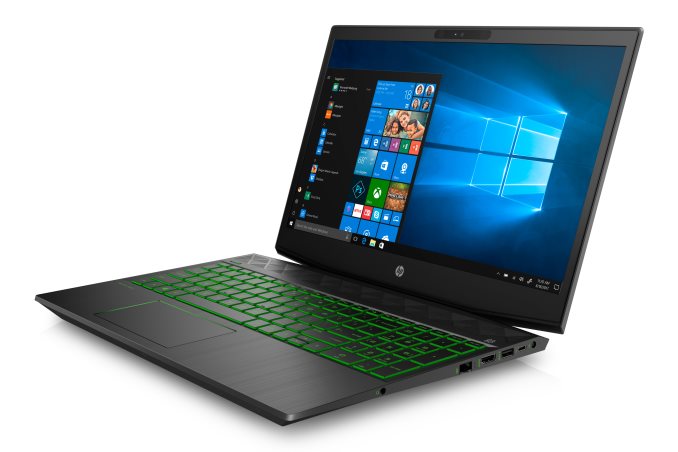
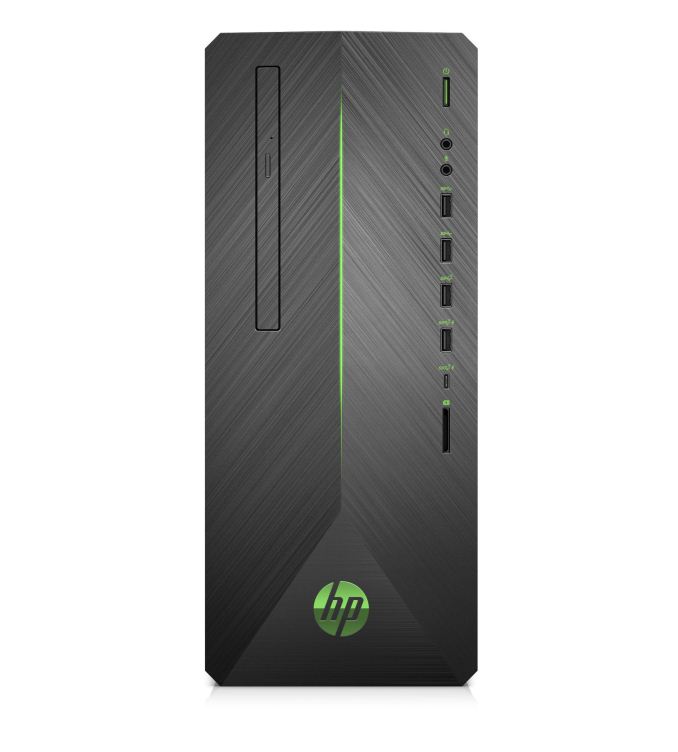
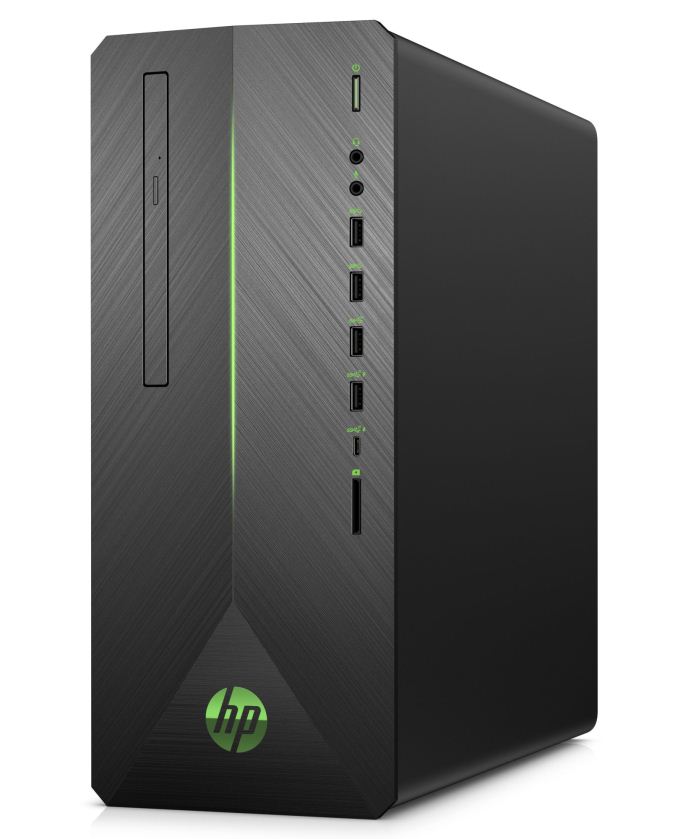
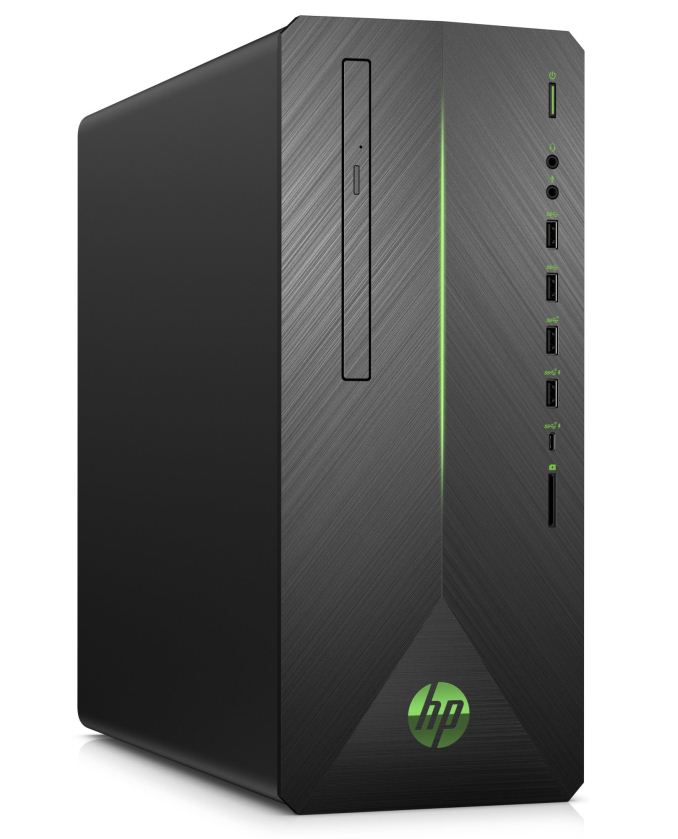
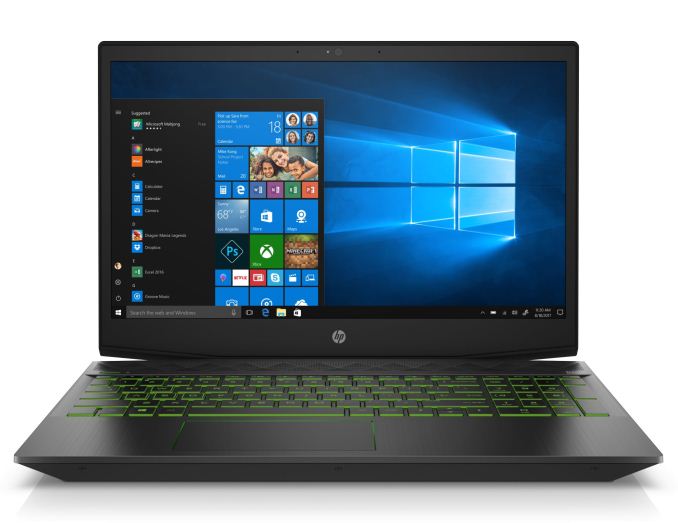
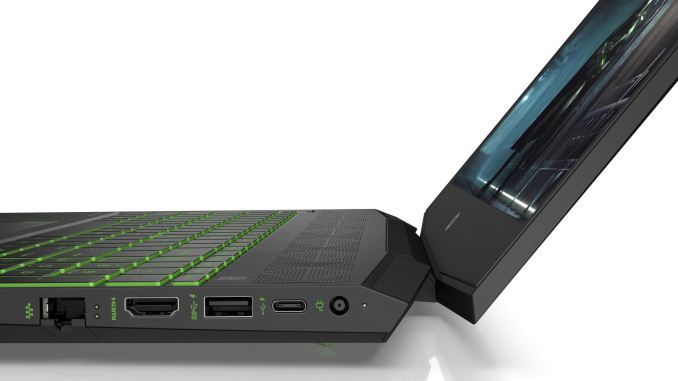



 Quote
Quote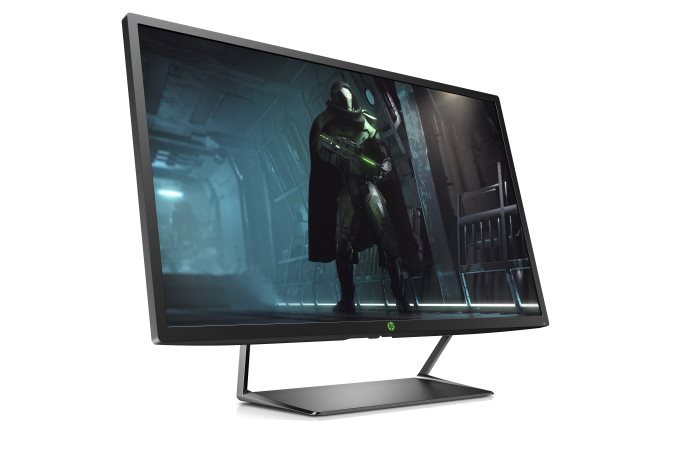
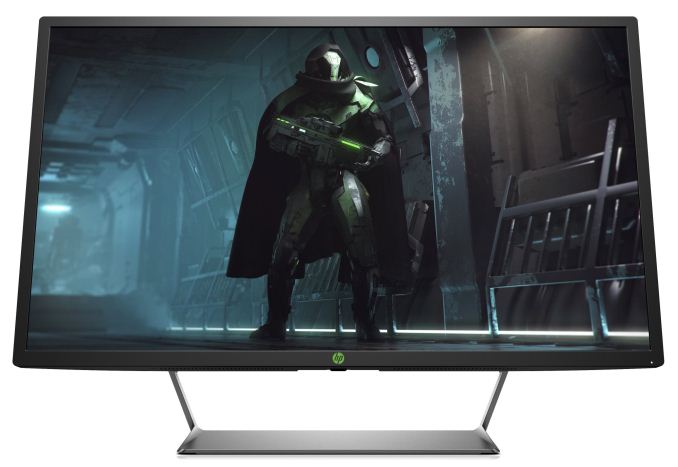
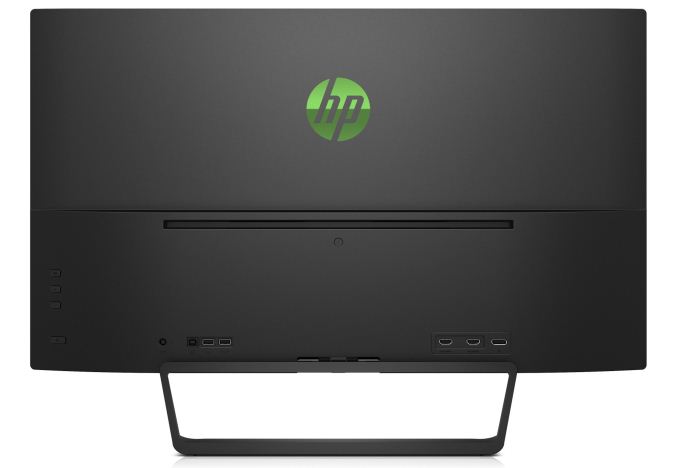
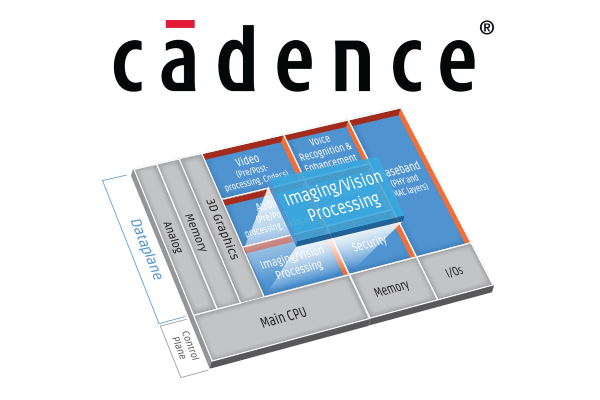
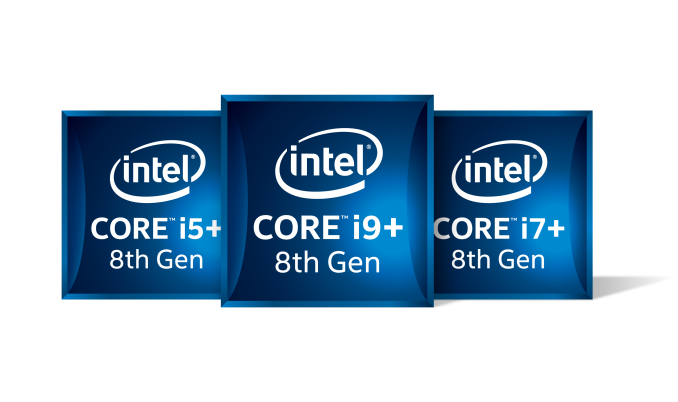
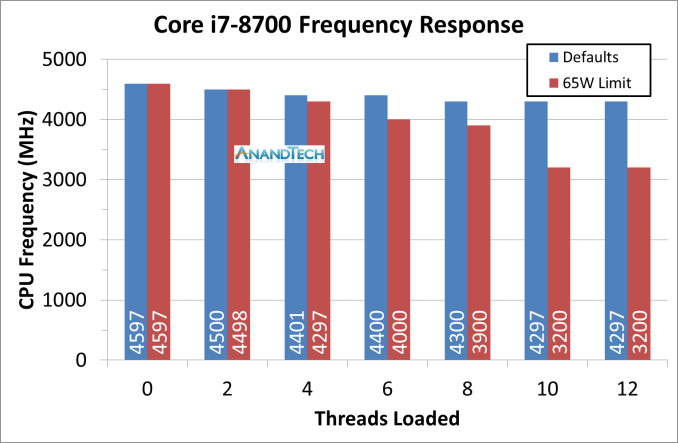
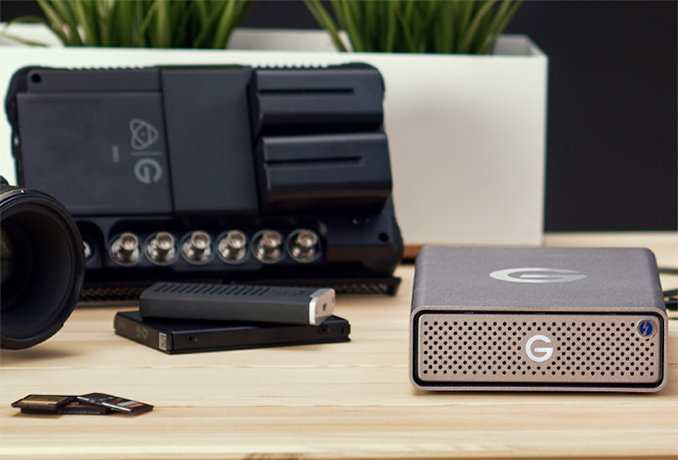
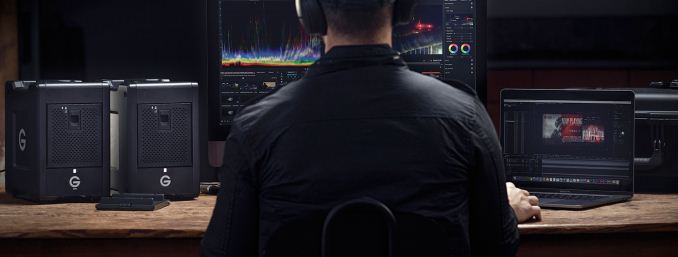
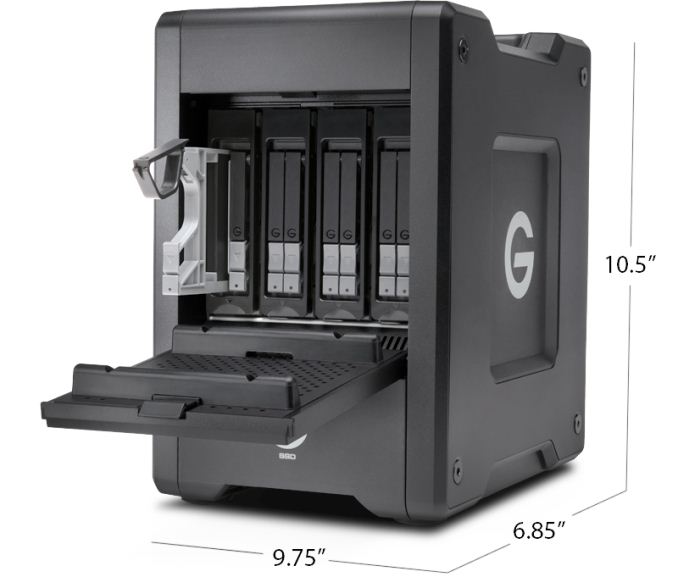
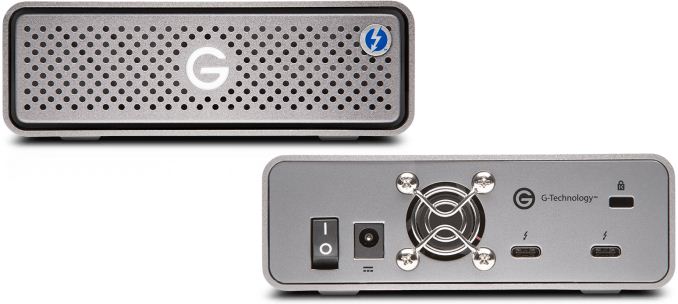
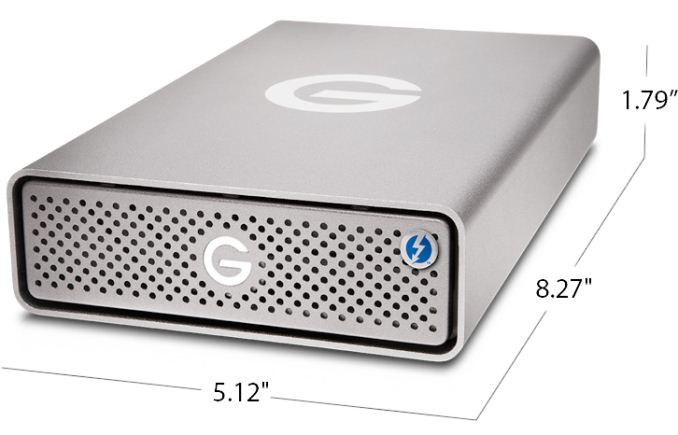

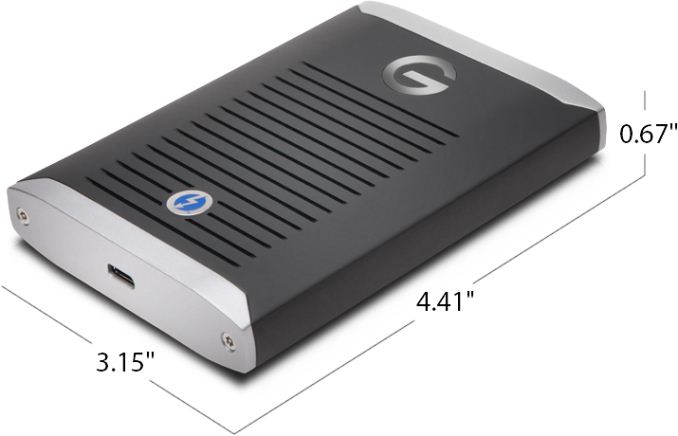
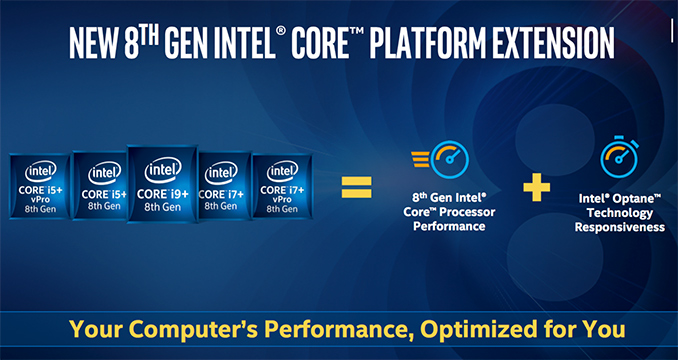
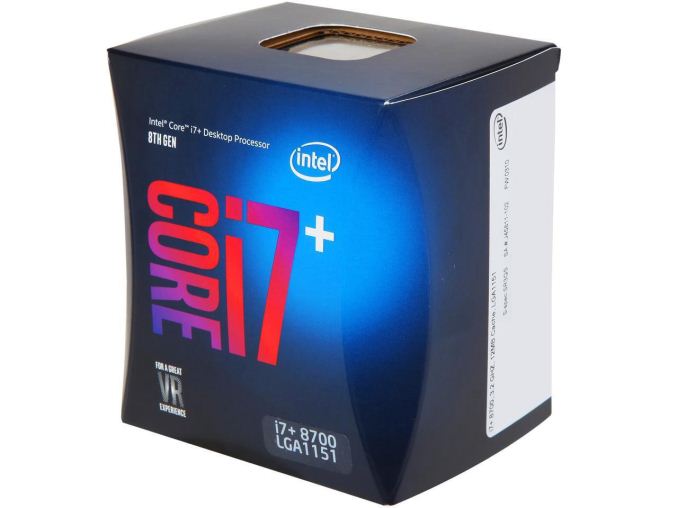

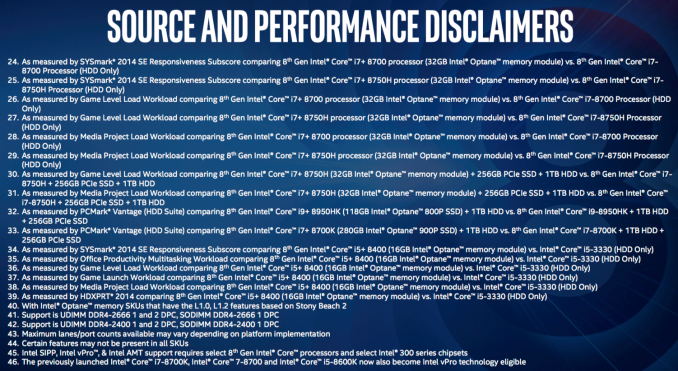
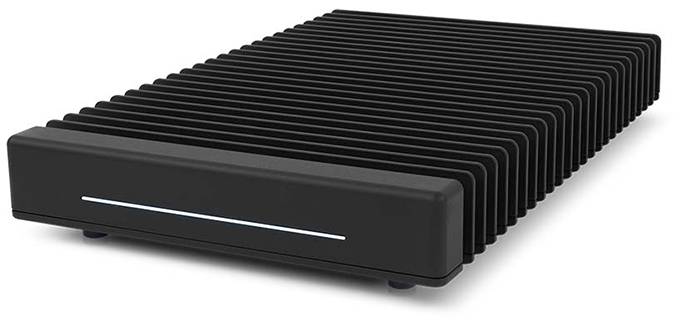
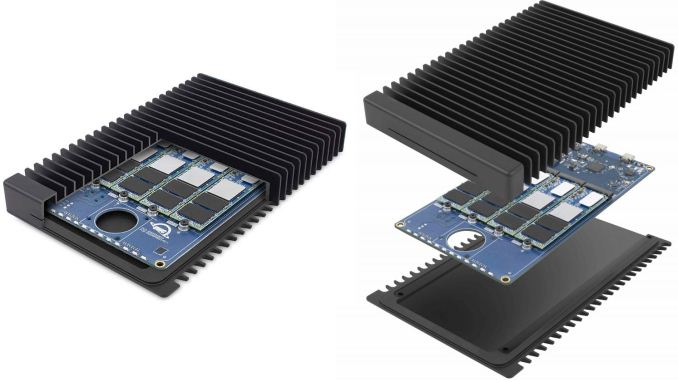
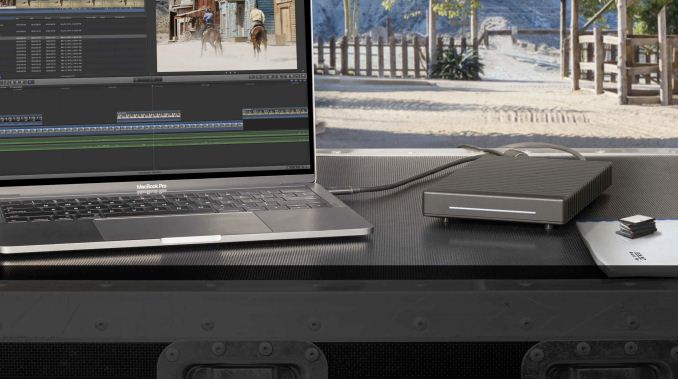

















Bookmarks